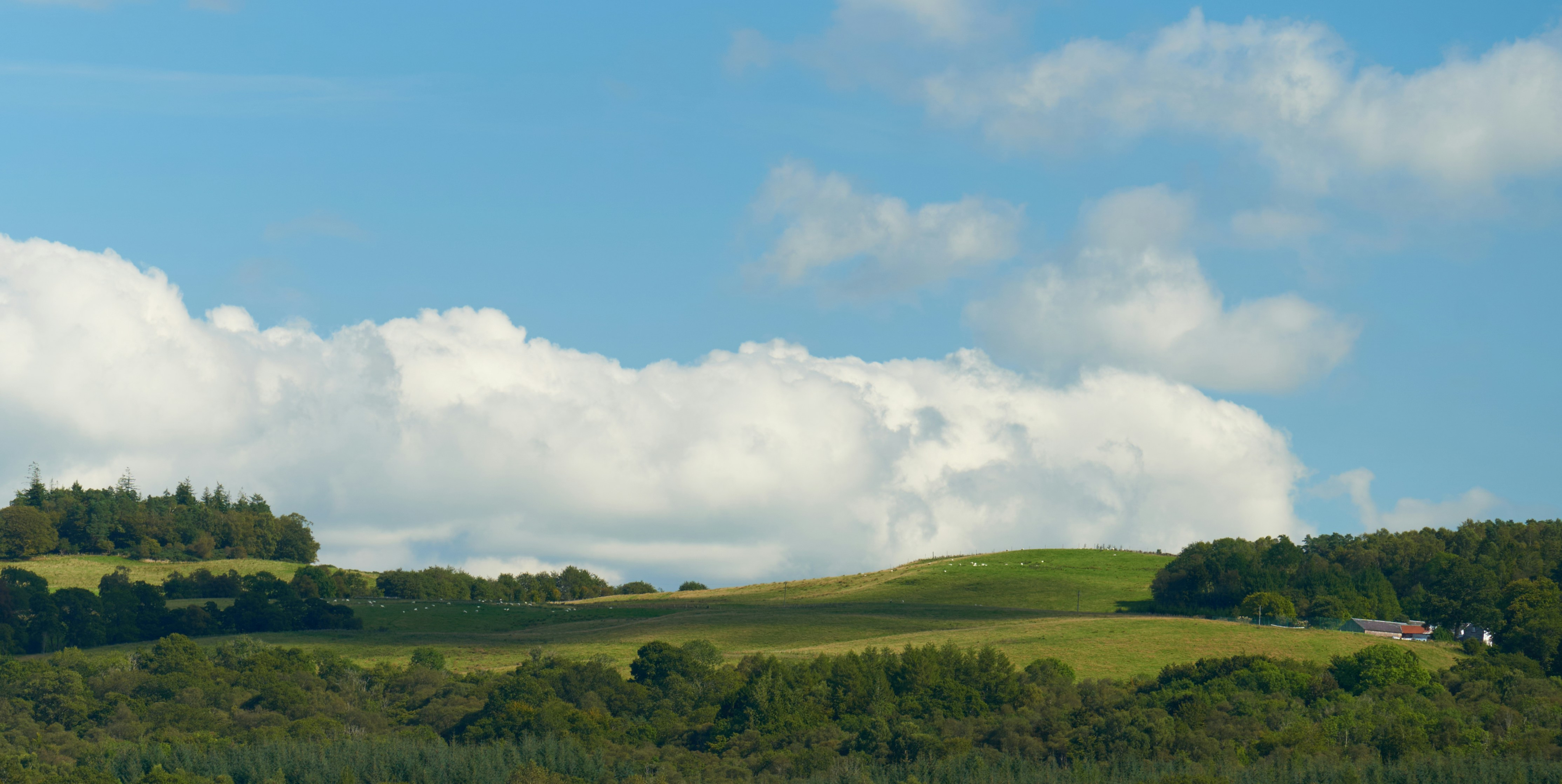The contents of this document should not be perceived as investment advice.
What is natural capital?


Contents
Nature’s economic role
Natural capital refers to the world’s stock of natural resources, such as soil, water, air and biodiversity, that support economic activity through essential goods, ecosystem services and climate regulation.
These services are typically categorised as provisioning, regulating, supporting and cultural. Healthy soils and oceans produce food; forests provide timber; wetlands regulate floods; and biodiversity supports everything from pollination to human wellbeing. Critically, the natural world also plays a foundational role in climate stability.
However, human activity is driving ecosystems toward irreversible tipping points, such as biodiversity collapse, ocean current disruption, large-scale forest dieback, permafrost thaw and coral reef loss. Each of these would amplify and compound climate risks.
Despite this, the value of nature has long been excluded from financial models or severely mispriced. The result has been widespread degradation, overuse and underinvestment. That is now changing. Markets, policies and regulations are starting to reflect the materiality of nature-related risks and benefits. This creates a structural opportunity for natural capital investments going forward.
As economies become more exposed to environmental change, the economic significance and value of natural capital is becoming clearer. From supply chains and infrastructure to financial stability, natural systems are not optional; they are embedded in the functioning of markets.
Natural resources
Land
Air
Water
Biodiversity

Goods and services
Provisioning
Food, timber
Regulating
Carbon sequestration, water filtration, biodiversity, crop pollination
Supporting
Nutrient cycling, soil formation
Cultural
Health and wellbeing, aesthetic, recreational
Nature's role in supporting the global economy
£33tn*
economic value generation is moderately or highly dependent on nature
(World Economic Forum, 2020)
~50%
of the global population depends directly on nature for livelihoods in agriculture, forestry, and fisheries
(Convention on Biological Diversity (CBD), 2021)
~£177bn*
worth of annual global food production relies on pollinators
(Bayer, 2025)
$113tn/year*
global economic value is provided by ecosystem services
(BCG, 2023)
The economic cost of nature and climate loss
$2tn/year*
in global GDP is at risk by 2030 due to nature-related risks
(World Economic Forum, 2023)
12%
reduction in global GDP projected from just 1°C of additional warming
(Bilal & Kanzig, 2024 (Nature))
$2.2tn*
is the total cost of weather and climate disasters from 1980-2024 in the US alone
(NOAA, 2023; Munich Re, 2024)
$1.1tn/year*
in additional infrastructure capex needed by 2040 due to worsening water risks
(Global Water Intelligence and Xylem, 2025)
£650m
was the total cost of flood insurance claims in the UK in 2024, the costliest year on record
(The Association of British Insurers, 2025)
*An exchange rate of USD 1.00 = GBP 0.75 was applied for conversion purposes (02/09/2025).
Three pillars of natural capital investment
Natural capital investments can either support or undermine climate and nature goals, depending on how they are managed. At one end of the spectrum, extractive land use accelerates degradation. At the other, sustainable land management and ecosystem restoration builds resilience and preserves productivity.
Institutional capital has a crucial role to play in driving this transition. Investor expectations, regulation and, rising awareness of environmental risk are already influencing asset allocation decisions. In parallel, disclosure frameworks such as TNFD are embedding nature into financial oversight. The result is a growing alignment between sustainable land use and long-term value strategy.
Within this landscape, natural capital investments typically fall into three interconnected categories:
Sustainable agriculture
Farming systems that improve soil health, limit chemical inputs, reduce emissions and support biodiversity while maintaining or improving productivity. Investment approaches include buy-and-operate models, were investors directly manage farms, and buy-and-lease models, where land is leased to operators.
Sustainable forestry
Forest management strategies that balance timber production with conservation and ecosystem services. Models include selective harvesting, longer rotations, mixed-species planting and afforestation, with certification enhancing transparency and access to markets.
Nature based solutions
Projects that manage ecosystems in ways that deliver measurable environmental benefits. These projects can include reforestation, rewilding, habitat bank creation, peatland restoration, or natural flood management. Investment models are evolving to include both established environmental credit markets and emerging outcomes-based payment mechanisms.
All three strategies share a common reliance on productive, regenerative ecosystems and long-term land management. Although they differ in market maturity and revenue pathways, each offers exposure to the growing value of nature.
Natural capital as a portfolio theme

Natural capital is not yet a standalone asset class. It is a cross-cutting investment theme that applies a sustainability lens to resource use, biological systems, and ecosystem services across real assets and private markets. Investors can allocate to it through existing exposures in real estate, infrastructure, natural resources, and private equity.
For institutional allocators, this thematic approach is operationally intuitive. It leverages established governance, due diligence, and risk frameworks without requiring new portfolio categories. Natural capital strategies can be implemented through familiar channels, enhancing sustainability alignment without added complexity.
Rather than replacing existing allocations, natural capital strengthens them. It improves long-term resilience, supports inflation protection, and contributes to diversification, while delivering environmental benefits that are increasingly material to risk and return. Nature-based investments help future-proof portfolios by addressing regulatory shifts, net zero targets, and evolving fiduciary duties.
As sustainability becomes central to institutional portfolio design, natural capital is emerging as a core dimension of strategic asset allocation. It offers financial, environmental, and strategic benefits in a world shaped by climate, biodiversity, and resource pressures.
Mapping natural capital to familiar asset classes
Real estate
Assets: Land, biological assets
Characteristics: Tangible, capital-intensive, income-producing, influenced by supply/demand, interest rates, and macro conditions
Investment Profile: Returns from rental income and capital appreciation; less liquid than listed equities
Infrastructure
Assets: Land, biological assets, investment platforms
Characteristics: Long-lived assets with predictable income, high barriers to entry
Investment Profile: Long-term, stable, often inflation-linked cash flows; low correlation to cycles; less liquid than listed equities; suitable for liability-matching
Private equity
Assets: Private companies, investment platforms
Characteristics: Active ownership, high operational involvement, higher risk/return profile, value created through operational and strategic improvements
Investment Profile: High return potential over medium-to-long term; capital appreciation-led; multi-year lock-up; higher volatility than core real assets
Other alternatives
Assets: Encompasses real estate, infrastructure, private equity, other non-traditional assets
Characteristics: Diverse asset types; varied liquidity, risk, and return; specialised knowledge often required
Investment Profile: Diversification benefits; potential for enhanced returns; often complex and less liquid; higher fees
Institutional investors are increasingly allocating to natural capital as part of their sustainability strategies (Gresham House and Mallow Street, 2024), recognising the role of forests, farmland, and ecosystems in addressing climate change, biodiversity loss, and long-term resource risks.


CDPQ created a Sustainable Land Management team with a mandate to invest up to $2 billion (CAD) in agricultural and forest lands by 2026.
(La Caisse, 2025)

Merseyside Pension Fund (UK) has allocated 4% of its £8.6 billion portfolio—approximately £350 million—into natural capital investments, including forestry, sustainable agriculture, and nature-based infrastructure (LGC, 2023).

Bayerische Versorgungskammer has allocated 1.5% of its total assets (approximately €1.7 billion) to timber investments and has been investing in timber since 2008.
(NetZero Investor, 2024)
Rest Superannuation has invested in regenerative agriculture as part of its commitment to allocate 1% of its portfolio to impact investments by 2026, supporting the global transition to net zero.
(Global AgInvesting, 2024)
The contents of this document should not be perceived as investment advice.
What is natural capital?


Contents
Nature’s economic role
Natural capital refers to the world’s stock of natural resources, such as soil, water, air and biodiversity, that support economic activity through essential goods, ecosystem services and climate regulation.
These services are typically categorised as provisioning, regulating, supporting and cultural. Healthy soils and oceans produce food; forests provide timber; wetlands regulate floods; and biodiversity supports everything from pollination to human wellbeing. Critically, the natural world also plays a foundational role in climate stability.
However, human activity is driving ecosystems toward irreversible tipping points, such as biodiversity collapse, ocean current disruption, large-scale forest dieback, permafrost thaw and coral reef loss. Each of these would amplify and compound climate risks.
Despite this, the value of nature has long been excluded from financial models or severely mispriced. The result has been widespread degradation, overuse and underinvestment. That is now changing. Markets, policies and regulations are starting to reflect the materiality of nature-related risks and benefits. This creates a structural opportunity for natural capital investments going forward.
As economies become more exposed to environmental change, the economic significance and value of natural capital is becoming clearer. From supply chains and infrastructure to financial stability, natural systems are not optional; they are embedded in the functioning of markets.
Natural resources
Land
Air
Water
Biodiversity
Goods and services
Provisioning
Food, timber
Regulating
Carbon sequestration, water filtration, biodiversity, crop pollination
Supporting
Nutrient cycling, soil formation
Cultural
Health and wellbeing, aesthetic, recreational
Nature's role in supporting the global economy
£33tn*
economic value generation is moderately or highly dependent on nature
(World Economic Forum, 2020)
~50%
of the global population depends directly on nature for livelihoods in agriculture, forestry, and fisheries
(Convention on Biological Diversity (CBD), 2021)
~£177bn*
worth of annual global food production relies on pollinators
(Bayer, 2025)
$113tn/year*
global economic value is provided by ecosystem services
(BCG, 2023)
The economic cost of nature and climate loss
$2tn/year*
in global GDP is at risk by 2030 due to nature-related risks
(World Economic Forum, 2023)
12%
reduction in global GDP projected from just 1°C of additional warming
(Bilal & Kanzig, 2024 (Nature))
$2.2tn*
is the total cost of weather and climate disasters from 1980-2024 in the US alone
(NOAA, 2023; Munich Re, 2024)
$1.1tn/year*
in additional infrastructure capex needed by 2040 due to worsening water risks
(Global Water Intelligence and Xylem, 2025)
£650m
was the total cost of flood insurance claims in the UK in 2024, the costliest year on record
(The Association of British Insurers, 2025)
*An exchange rate of USD 1.00 = GBP 0.75 was applied for conversion purposes (02/09/2025).
Three pillars of natural capital investment
Natural capital investments can either support or undermine climate and nature goals, depending on how they are managed. At one end of the spectrum, extractive land use accelerates degradation. At the other, sustainable land management and ecosystem restoration builds resilience and preserves productivity.
Institutional capital has a crucial role to play in driving this transition. Investor expectations, regulation and, rising awareness of environmental risk are already influencing asset allocation decisions. In parallel, disclosure frameworks such as TNFD are embedding nature into financial oversight. The result is a growing alignment between sustainable land use and long-term value strategy.
Within this landscape, natural capital investments typically fall into three interconnected categories:
Sustainable agriculture
Farming systems that improve soil health, limit chemical inputs, reduce emissions and support biodiversity while maintaining or improving productivity. Investment approaches include buy-and-operate models, were investors directly manage farms, and buy-and-lease models, where land is leased to operators.
Sustainable forestry
Forest management strategies that balance timber production with conservation and ecosystem services. Models include selective harvesting, longer rotations, mixed-species planting and afforestation, with certification enhancing transparency and access to markets.
Nature based solutions
Projects that manage ecosystems in ways that deliver measurable environmental benefits. These projects can include reforestation, rewilding, habitat bank creation, peatland restoration, or natural flood management. Investment models are evolving to include both established environmental credit markets and emerging outcomes-based payment mechanisms.
All three strategies share a common reliance on productive, regenerative ecosystems and long-term land management. Although they differ in market maturity and revenue pathways, each offers exposure to the growing value of nature.
Natural capital as a portfolio theme
Natural capital is not yet a standalone asset class. It is a cross-cutting investment theme that applies a sustainability lens to resource use, biological systems, and ecosystem services across real assets and private markets. Investors can allocate to it through existing exposures in real estate, infrastructure, natural resources, and private equity.
For institutional allocators, this thematic approach is operationally intuitive. It leverages established governance, due diligence, and risk frameworks without requiring new portfolio categories. Natural capital strategies can be implemented through familiar channels, enhancing sustainability alignment without added complexity.
Rather than replacing existing allocations, natural capital strengthens them. It improves long-term resilience, supports inflation protection, and contributes to diversification, while delivering environmental benefits that are increasingly material to risk and return. Nature-based investments help future-proof portfolios by addressing regulatory shifts, net zero targets, and evolving fiduciary duties.
As sustainability becomes central to institutional portfolio design, natural capital is emerging as a core dimension of strategic asset allocation. It offers financial, environmental, and strategic benefits in a world shaped by climate, biodiversity, and resource pressures.
Mapping natural capital to familiar asset classes
Real estate
Assets: Land, biological assets
Characteristics: Tangible, capital-intensive, income-producing, influenced by supply/demand, interest rates, and macro conditions
Investment Profile: Returns from rental income and capital appreciation; less liquid than listed equities
Infrastructure
Assets: Land, biological assets, investment platforms
Characteristics: Long-lived assets with predictable income, high barriers to entry
Investment Profile: Long-term, stable, often inflation-linked cash flows; low correlation to cycles; less liquid than listed equities; suitable for liability-matching
Private equity
Assets: Private companies, investment platforms
Characteristics: Active ownership, high operational involvement, higher risk/return profile, value created through operational and strategic improvements
Investment Profile: High return potential over medium-to-long term; capital appreciation-led; multi-year lock-up; higher volatility than core real assets
Other alternatives
Assets: Encompasses real estate, infrastructure, private equity, other non-traditional assets
Characteristics: Diverse asset types; varied liquidity, risk, and return; specialised knowledge often required
Investment Profile: Diversification benefits; potential for enhanced returns; often complex and less liquid; higher fees
Institutional investors are increasingly allocating to natural capital as part of their sustainability strategies (Gresham House and Mallow Street, 2024), recognising the role of forests, farmland, and ecosystems in addressing climate change, biodiversity loss, and long-term resource risks.


Merseyside Pension Fund (UK) has allocated 4% of its £8.6 billion portfolio—approximately £350 million—into natural capital investments, including forestry, sustainable agriculture, and nature-based infrastructure (LGC, 2023).

CDPQ created a Sustainable Land Management team with a mandate to invest up to $2 billion (CAD) in agricultural and forest lands by 2026.
(La Caisse, 2025)

Bayerische Versorgungskammer has allocated 1.5% of its total assets (approximately €1.7 billion) to timber investments and has been investing in timber since 2008.
(NetZero Investor, 2024)
Rest Superannuation has invested in regenerative agriculture as part of its commitment to allocate 1% of its portfolio to impact investments by 2026, supporting the global transition to net zero.
(Global AgInvesting, 2024)
The contents of this document should not be perceived as investment advice.
What is natural capital?


Contents
Nature’s economic role
Natural capital refers to the world’s stock of natural resources, such as soil, water, air and biodiversity, that support economic activity through essential goods, ecosystem services and climate regulation.
These services are typically categorised as provisioning, regulating, supporting and cultural. Healthy soils and oceans produce food; forests provide timber; wetlands regulate floods; and biodiversity supports everything from pollination to human wellbeing. Critically, the natural world also plays a foundational role in climate stability.
However, human activity is driving ecosystems toward irreversible tipping points, such as biodiversity collapse, ocean current disruption, large-scale forest dieback, permafrost thaw and coral reef loss. Each of these would amplify and compound climate risks.
Despite this, the value of nature has long been excluded from financial models or severely mispriced. The result has been widespread degradation, overuse and underinvestment. That is now changing. Markets, policies and regulations are starting to reflect the materiality of nature-related risks and benefits. This creates a structural opportunity for natural capital investments going forward.
As economies become more exposed to environmental change, the economic significance and value of natural capital is becoming clearer. From supply chains and infrastructure to financial stability, natural systems are not optional; they are embedded in the functioning of markets.
Natural resources
Land
Air
Water
Biodiversity
Goods and services
Provisioning
Food, timber
Regulating
Carbon sequestration, water filtration, biodiversity, crop pollination
Supporting
Nutrient cycling, soil formation
Cultural
Health and wellbeing, aesthetic, recreational
Nature's role in supporting the global economy
£33tn*
economic value generation is moderately or highly dependent on nature
(World Economic Forum, 2020)
~50%
of the global population depends directly on nature for livelihoods in agriculture, forestry, and fisheries
(Convention on Biological Diversity (CBD), 2021)
~£177bn*
worth of annual global food production relies on pollinators
(Bayer, 2025)
$113tn/year*
global economic value is provided by ecosystem services
(BCG, 2023)
The economic cost of nature and climate loss
$2tn/year*
in global GDP is at risk by 2030 due to nature-related risks
(World Economic Forum, 2023)
12%
reduction in global GDP projected from just 1°C of additional warming
(Bilal & Kanzig, 2024 (Nature))
$2.2tn*
is the total cost of weather and climate disasters from 1980-2024 in the US alone
(NOAA, 2023; Munich Re, 2024)
$1.1tn/year*
in additional infrastructure capex needed by 2040 due to worsening water risks
(Global Water Intelligence and Xylem, 2025)
£650m
was the total cost of flood insurance claims in the UK in 2024, the costliest year on record
(The Association of British Insurers, 2025)
*An exchange rate of USD 1.00 = GBP 0.75 was applied for conversion purposes (02/09/2025).
Three pillars of natural capital investment
Natural capital investments can either support or undermine climate and nature goals, depending on how they are managed. At one end of the spectrum, extractive land use accelerates degradation. At the other, sustainable land management and ecosystem restoration builds resilience and preserves productivity.
Institutional capital has a crucial role to play in driving this transition. Investor expectations, regulation and, rising awareness of environmental risk are already influencing asset allocation decisions. In parallel, disclosure frameworks such as TNFD are embedding nature into financial oversight. The result is a growing alignment between sustainable land use and long-term value strategy.
Within this landscape, natural capital investments typically fall into three interconnected categories:
Sustainable agriculture
Farming systems that improve soil health, limit chemical inputs, reduce emissions and support biodiversity while maintaining or improving productivity. Investment approaches include buy-and-operate models, were investors directly manage farms, and buy-and-lease models, where land is leased to operators.
Sustainable forestry
Forest management strategies that balance timber production with conservation and ecosystem services. Models include selective harvesting, longer rotations, mixed-species planting and afforestation, with certification enhancing transparency and access to markets.
Nature based solutions
Projects that manage ecosystems in ways that deliver measurable environmental benefits. These projects can include reforestation, rewilding, habitat bank creation, peatland restoration, or natural flood management. Investment models are evolving to include both established environmental credit markets and emerging outcomes-based payment mechanisms.
All three strategies share a common reliance on productive, regenerative ecosystems and long-term land management. Although they differ in market maturity and revenue pathways, each offers exposure to the growing value of nature.
Natural capital as a portfolio theme

Natural capital is not yet a standalone asset class. It is a cross-cutting investment theme that applies a sustainability lens to resource use, biological systems, and ecosystem services across real assets and private markets. Investors can allocate to it through existing exposures in real estate, infrastructure, natural resources, and private equity.
For institutional allocators, this thematic approach is operationally intuitive. It leverages established governance, due diligence, and risk frameworks without requiring new portfolio categories. Natural capital strategies can be implemented through familiar channels, enhancing sustainability alignment without added complexity.
Rather than replacing existing allocations, natural capital strengthens them. It improves long-term resilience, supports inflation protection, and contributes to diversification, while delivering environmental benefits that are increasingly material to risk and return. Nature-based investments help future-proof portfolios by addressing regulatory shifts, net zero targets, and evolving fiduciary duties.
As sustainability becomes central to institutional portfolio design, natural capital is emerging as a core dimension of strategic asset allocation. It offers financial, environmental, and strategic benefits in a world shaped by climate, biodiversity, and resource pressures.
Mapping natural capital to familiar asset classes
Real estate
Assets: Land, biological assets
Characteristics: Tangible, capital-intensive, income-producing, influenced by supply/demand, interest rates, and macro conditions
Investment Profile: Returns from rental income and capital appreciation; less liquid than listed equities
Infrastructure
Assets: Land, biological assets, investment platforms
Characteristics: Long-lived assets with predictable income, high barriers to entry
Investment Profile: Long-term, stable, often inflation-linked cash flows; low correlation to cycles; less liquid than listed equities; suitable for liability-matching
Private equity
Assets: Private companies, investment platforms
Characteristics: Active ownership, high operational involvement, higher risk/return profile, value created through operational and strategic improvements
Investment Profile: High return potential over medium-to-long term; capital appreciation-led; multi-year lock-up; higher volatility than core real assets
Other alternatives
Assets: Encompasses real estate, infrastructure, private equity, other non-traditional assets
Characteristics: Diverse asset types; varied liquidity, risk, and return; specialised knowledge often required
Investment Profile: Diversification benefits; potential for enhanced returns; often complex and less liquid; higher fees
Institutional investors are increasingly allocating to natural capital as part of their sustainability strategies (Gresham House and Mallow Street, 2024), recognising the role of forests, farmland, and ecosystems in addressing climate change, biodiversity loss, and long-term resource risks.


South Yorkshire Pension Fund has allocated 3.5% of its portfolio to natural capital, encompassing regenerative agriculture and sustainable forestry.
(Agri Investor, 2025)

CDPQ created a Sustainable Land Management team with a mandate to invest up to $2 billion (CAD) in agricultural and forest lands by 2026.
(La Caisse, 2025)

Bayerische Versorgungskammer has allocated 1.5% of its total assets (approximately €1.7 billion) to timber investments and has been investing in timber since 2008.
(NetZero Investor, 2024)
Rest Superannuation has invested in regenerative agriculture as part of its commitment to allocate 1% of its portfolio to impact investments by 2026, supporting the global transition to net zero.
(Global AgInvesting, 2024)
